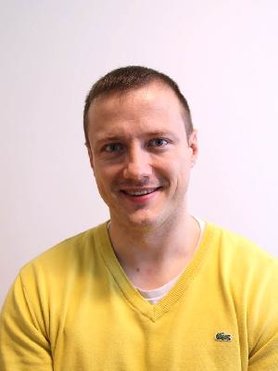

Dr.ir. B. (Branko) Šavija
Dr.ir. B. (Branko) Šavija
Profile
Branko Šavija is an associate professor in the group of Materials and Environment. He studied structural engineering at the Faculty of Civil Engineering in Belgrade, Serbia, graduating in 2009. His PhD at TU Delft focused on testing and modelling of chloride ingress in cracked concrete. His doctoral thesis was selected as the best thesis funded by the Dutch technology foundation (STW), and he was named a “Simon Stevin Gezel” in 2015. Between 2014-2017, he was a post-doctoral researcher in the same group, and was working on development of smart concrete: self-healing concrete that is able to “heal” cracks upon damage, and concrete containing microencapsulated phase change materials (PCMs) that can help control temperature induced cracking. After working as a consultant at TNO (2017-2018), he returned to the University in 2018. His current research interest include mutli-scale mechanics of cementitious materials and additive manufacturing of cementitious composites.
For his work, he was awarded a Gustavo Colonnetti medal in 2020 by RILEM (The International Union of Laboratories and Experts in Construction Materials, Systems and Structures). He was also awarded an ERC Starting Grant in 2021 for the project "Auxetic cementitious composites by 3D printing (ACC-3D)".
He is an active member of RILEM committees:
- 304-ADC : Assessment of Additively Manufactured Concrete Materials and Structures
- DCS: Data driven concrete science
- 299-TES : Thermal energy storage in cementitious composites
Expertise
Publications
-
2024
Assessment of self-healing behavior of polypropylene fiber-reinforced cement mortar with crystalline admixture
the effects of crack widths, cracking ages, and external conditions
Baoju Liu / Huiwen Ye / Junyi Jiang / Jinyan Shi / Çağlar Yalçınkaya / Branko Šavija -
2024
Autogenous deformation-induced stress evolution in cementitious materials considering viscoelastic properties
A review of experiments and models
Minfei Liang / Jinbao Xie / Shan He / Yu Chen / Erik Schlangen / Branko Šavija -
2024
Automatic enhancement of vascular configuration for self-healing concrete through reinforcement learning approach
Zhi Wan / Yading Xu / Ze Chang / Minfei Liang / Branko Šavija
-
2024
Decarbonizing the cement industry
Findings from coupling prospective life cycle assessment of clinker with integrated assessment model scenarios
Amelie Müller / Carina Harpprecht / Romain Sacchi / Ben Maes / Mariësse van Sluisveld / Vassilis Daioglou / Branko Šavija / Bernhard Steubing -
2024
Experimentally informed modeling of the early-age stress evolution in cementitious materials using exponential conversion from creep to relaxation
Minfei Liang / Giovanni Di Luzio / Erik Schlangen / Branko Šavija
-
Media
-
2023-03-07
Branko Šavija in de media 2023
Appeared in: 4TU
-
2022-02-07
Elektriciteit opwekken met auxetisch beton
Appeared in: Installatie Journaal
-
2021-12-07
Flexibel beton kan energie opwekken uit golven
Appeared in: Cobouw
-
2021-08-01
Flexibel beton
Appeared in: De Ingenieur
-
2021-06-10
Obtaining energy from concrete
Appeared in: NWO
Prizes
-
2020
Gustavo Colonnetti
Starting in 2016, the Gustavo Colonnetti Medal is awarded each year to up to two researchers under 35 years of age, who have made an outstanding scientific contribution to the field of construction materials and structures.
Ancillary activities
-
2023-08-01 - 2025-07-31
Other services